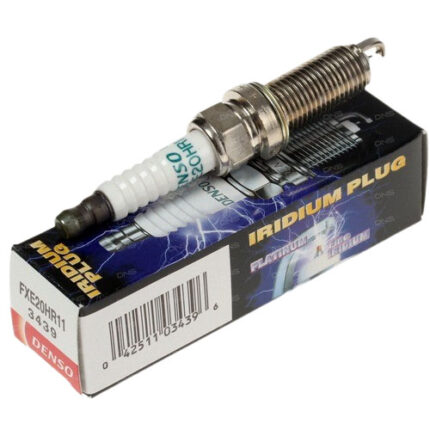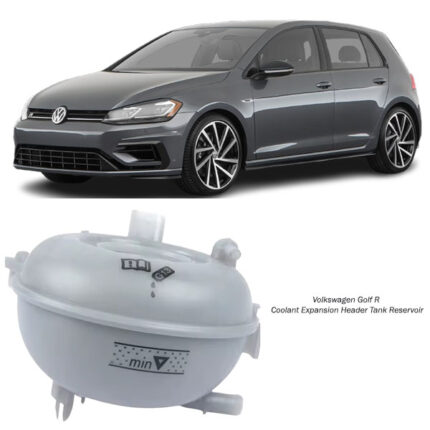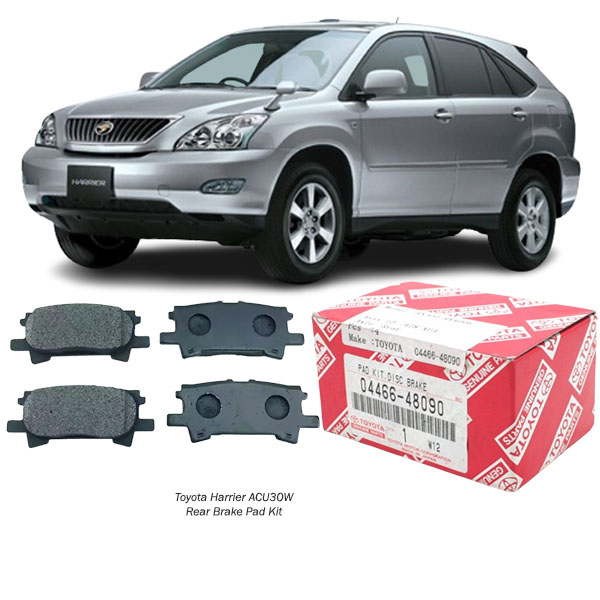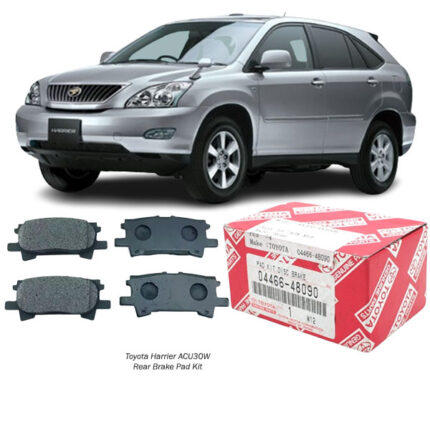Get Toyota Harrier ACU30W Rear Brake Pad Kit 04466-48090 in Kenya
The rear brake pad kit is an essential component of a vehicle’s braking system, responsible for slowing down and stopping the car safely. Whether you drive a Toyota Prado 120/150, Nissan Note, Wingroad, Tiida, or any other vehicle, having high-quality rear brake pads ensures smooth braking, reduced stopping distance, and increased safety.
In this comprehensive guide, we’ll cover everything you need to know about rear brake pads, including their function, importance, replacement signs, installation, maintenance, and common FAQs.
What Are Rear Brake Pads?
Brake pads are friction materials that press against the brake rotors (discs) to slow down or stop a vehicle. The rear brake pad kit includes:
Brake Pads (Left & Right) – The main components that create friction.
Shims – Reduce noise and vibrations.
Clips & Springs – Ensure proper fitment and function.
While front brake pads handle most of the braking force (about 60-70%), rear brake pads play a crucial role in stability, balance, and overall braking efficiency.
Types of Rear Brake Pads
There are different types of brake pad materials, each offering unique advantages.
Semi-Metallic Brake Pads
Made from metal fibers and resin
Provide strong stopping power
Perform well in high temperatures
Slightly noisier and may cause more rotor wear
Ceramic Brake Pads
Made from ceramic fibers and non-metallic materials
Offer quiet, smooth braking
Last longer and produce less brake dust
More expensive than other types
Organic (NAO) Brake Pads
Made from non-metallic fibers (rubber, carbon, etc.)
Softer and quieter but wear out faster
Suitable for light vehicles and city driving
For SUVs like the Toyota Prado 120/150, semi-metallic or ceramic brake pads are preferred due to their durability and braking performance.
Why Are Rear Brake Pads Important?
Although the front brakes do most of the work, rear brake pads are vital for:
Vehicle Stability – Prevents skidding and maintains balance when braking.
Reduced Brake Fade – Helps distribute braking force evenly.
Shorter Stopping Distance – Enhances overall braking performance.
Protection for the Brake Rotors – Prevents excessive wear on rotors.
Without properly functioning rear brake pads, braking efficiency is compromised, increasing the risk of accidents.
Signs of Worn-Out Rear Brake Pads
Over time, brake pads wear down due to friction and heat exposure. Here are common signs that indicate your rear brake pads need replacement:
Squeaking or Squealing Noises – Worn-out brake pads produce a high-pitched sound.
Grinding Noise – Indicates metal-to-metal contact, meaning the pads are completely worn.
Longer Braking Distance – Reduced stopping power can be dangerous.
Brake Warning Light – Some vehicles have sensors that trigger a warning.
Excessive Brake Dust – More dust on the wheels indicates pad wear.
Vibrations When Braking – Warped brake rotors or uneven wear on pads can cause shaking.
If you experience any of these symptoms, it’s time to inspect and replace the rear brake pads.
Replacing Rear Brake Pads – Step-by-Step Guide
Changing rear brake pads is a relatively simple task that requires basic tools.
Tools Needed
Jack & jack stands
Lug wrench
Socket wrench
C-clamp or brake caliper tool
Brake cleaner
New rear brake pad kit
Installation Steps
Park on a Level Surface – Engage the parking brake and use wheel chocks.
Loosen the Lug Nuts – Before jacking up the car.
Jack Up the Vehicle – Secure it with jack stands.
Remove the Rear Wheels – To access the brake caliper.
Unbolt the Brake Caliper – Use a socket wrench to remove the bolts.
Remove the Old Brake Pads – Slide them out carefully.
Clean the Brake Components – Use brake cleaner to remove dust and debris.
Install the New Brake Pads – Insert them into the caliper bracket.
Compress the Brake Caliper Piston – Use a C-clamp to push the piston back.
Reassemble Everything – Bolt the caliper back and reinstall the wheel.
Pump the Brake Pedal – Ensures proper brake engagement before driving.
Tip: Avoid touching the brake pad friction surface with greasy hands to maintain effectiveness.
OEM vs Aftermarket Brake Pads
When replacing rear brake pads, you have two options:
OEM (Original Equipment Manufacturer):
Designed by the car manufacturer
Ensures a perfect fit and reliability
More expensive but better long-term performance
Aftermarket Brake Pads:
Wide variety of brands and materials
Some offer higher performance (e.g., ceramic or semi-metallic)
Quality varies – choose reputable brands
For Toyota Prado 120/150, Nissan Note, Wingroad, and Tiida, OEM brake pads are recommended for daily driving, while high-performance ceramic or semi-metallic options are great for heavy-duty use.
Maintenance & Longevity Tips
To extend the lifespan of your rear brake pads, follow these maintenance tips:
Inspect Brake Pads Every 20,000 km – Look for thickness and wear.
Check Brake Fluid Levels – Low fluid can affect braking performance.
Avoid Sudden Braking – Increases pad wear and generates excess heat.
Clean the Brake System – Removes dust and debris buildup.
Replace Both Sides at the Same Time – Ensures even braking performance.
Proper maintenance helps prevent premature wear and costly brake repairs.
Common Questions About Rear Brake Pads
How long do rear brake pads last?
On average, rear brake pads last 50,000 – 80,000 km, but this depends on driving habits and road conditions.
Can I drive with worn-out rear brake pads?
No. Worn-out brake pads increase stopping distance and risk brake failure, making driving dangerous.
How much does it cost to replace rear brake pads?
Prices vary, but expect $50 – $200 for a rear brake pad kit, plus labor costs if done at a shop.
Do I need to replace rear and front brake pads together?
Not necessarily. Rear pads wear slower than front pads, so they can be replaced separately.
How can I check rear brake pad wear?
Visually inspect the pad thickness (should be at least 3-4mm thick) or listen for squealing noises.
Follow us on Facebook for more parts.





Reviews
Clear filtersThere are no reviews yet.